Luckily, I will share with you here the 15 very best things to do in Oaxaca City (also known as Oaxaca de Juárez), including some less common tips based on my two weeks spent here. I’ll also share my honest opinion on some sights that might not be worth it if you have limited time.
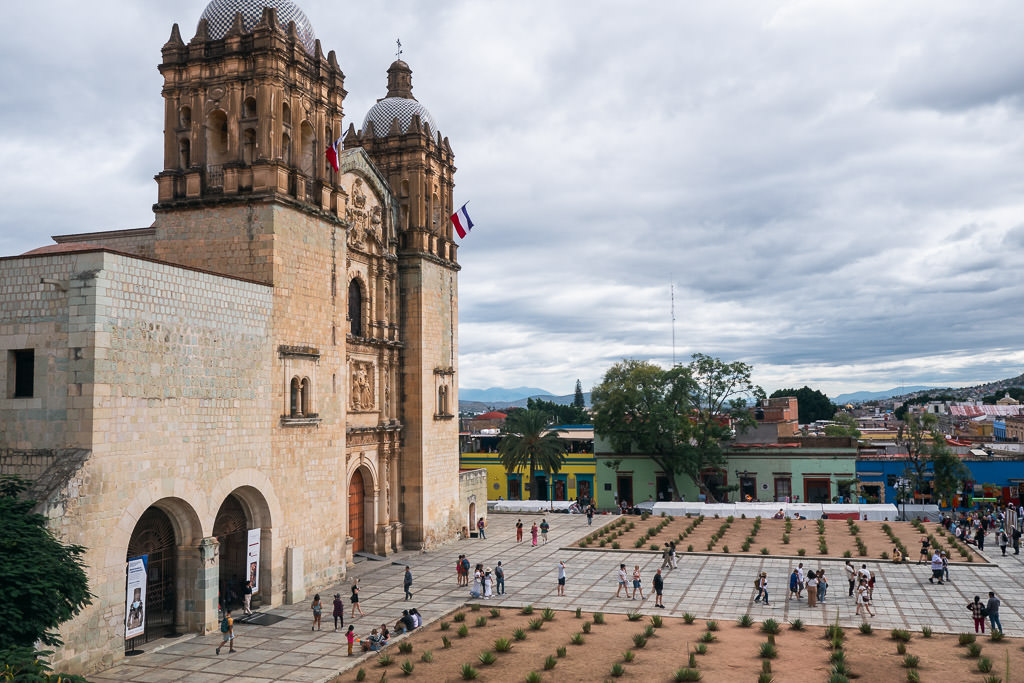
For more background information and practical tips, you can also check out my complete travel guide to Oaxaca.
Plan your trip to Oaxaca City
Top 15 Things to Do in Oaxaca
Let’s take a look at the very best things you can do in Oaxaca City, including some spectacular day trips into the surrounding valleys.
| Essential things to do | Take a walking tour of the historical city, see the churches and the botanical garden, and take a trip to Monte Alban. |
| Food and drink | Take a traditional cooking class, visit a Mezcal distillery or Mezcaleria, snack on chapulines at the market, and try as many moles as you can! |
| Quirky highlights | Explore the colorful neighborhoods of Jalatlaco and Xochimilco or see the Tree of Tule. |
| Off the typical path | Check out the Sunday market in Tlacolula, the Central de Abastos market, or go hiking among the Pueblos Mancomunicados. |
Scroll along for more details on all these activities and sights!
1. Take a walking tour through the historic center
Oaxaca has such a delightful historical center. The streets are lined almost solely with low-rise colonial-era architecture, with very few signs of modern construction.
Understanding Oaxaca’s history and uniqueness on a walking tour will help you appreciate the city all the more.
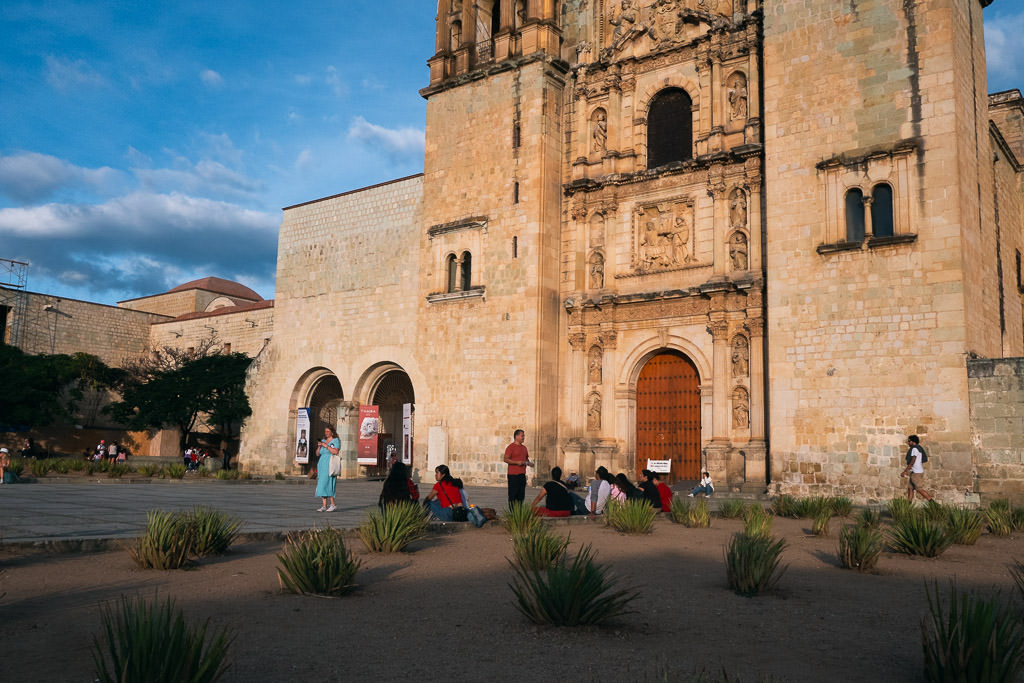
Oaxaca by Locals does a great free walking tour around the city, where they’ll show you top sights and some more local gems. (Rather than being exactly free, these tours are donation-based. They are also usually with a large group.)
If you prefer a more private tour, then you can join this organized walking tour. Your professional guide will lead you through many of the top city sites, including those of the Templo de Santo Domingo and Mercado Benito Juárez.
2. Admire the ancient pyramids of Monte Albán
By far the most popular day trip you can take from Oaxaca City, the ruins of Monte Albán offer us a glimpse into the pre-Hispanic world of Southern Mexico.
Built in 600 B.C., the once flourishing city has been conquered and ruled by several civilizations including the Zapotecs, Olmecs, and Mixtecs.
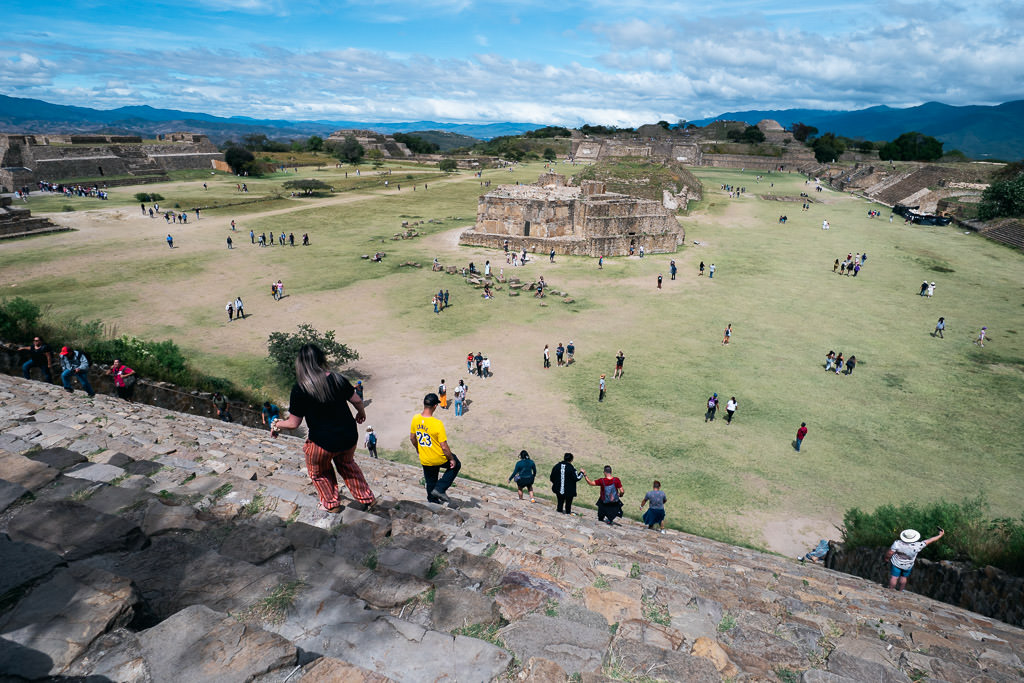
The structures are very impressive in their own right, but are also known for their formidable positioning on top of a hill, from which you get some incredible views over the surrounding Oaxaca valleys.
You can reach Monte Albán independently (it’s an hour’s drive from the city), but I highly suggest going with this day tour from Oaxaca City. It will include pick-up and drop-off from your hotel and a professional guide who can provide useful insights, which will make up for the complete lack of information signs at the site.
3. Eat local food in the Mercado 20 de Noviembre
Oaxaca is regularly crowned the ‘cuisine capital’ of Mexico. One of the best ways to dive into the local food culture is to head to its two fantastic markets.
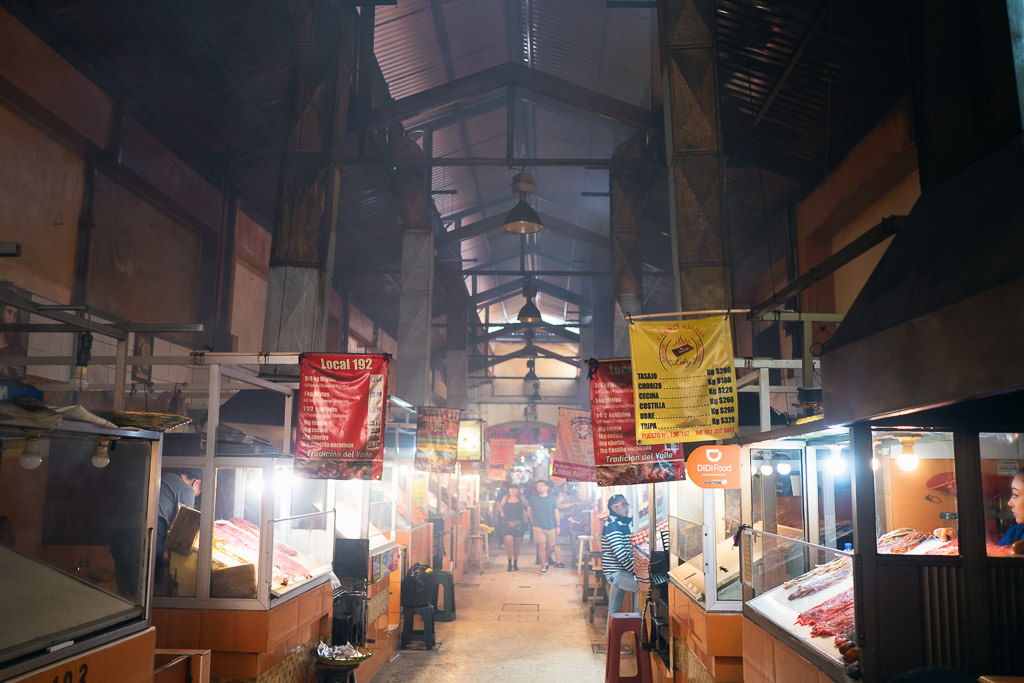
Mercado Benito Juárez (map pin) is the first one, which is known for its large selection of fresh produce and handicrafts.
Mercado 20 de Noviembre, just across the street (map pin), is best for foodies thanks to its endless food stalls and artisan vendors.
You enter it through the Pasillo de Humo (alley of smoke), named so because of the numerous BBQ stalls here creating a thick smoke-filled air.
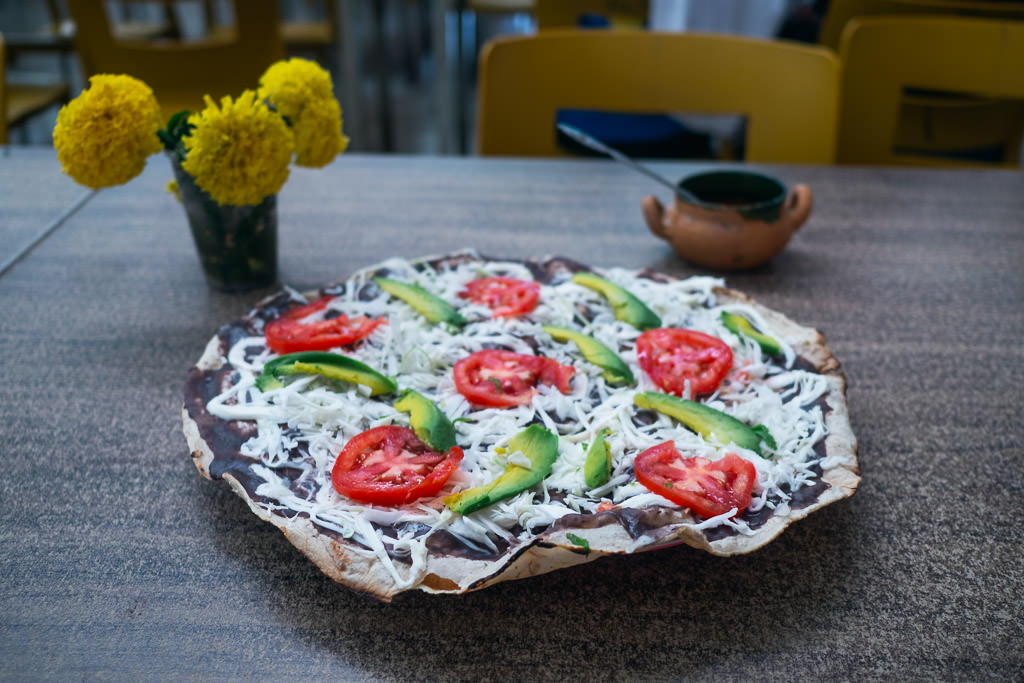
It’s the perfect place to try authentic Oaxacan dishes such as Tlayudas (which look vaguely like pizzas and are layered with meat, avocado, and cheese). Others worth sampling include Quesillo and Tamales.
While you are here… try a local snack!
Feeling adventurous? Then try some Chapulines (fried grasshoppers). This suggestion will inspire either curiosity or revulsion in some, but they are surprisingly snackable, often seasoned with some salt, lime, or chili powder.
4. Explore the Templo de Santo Domingo
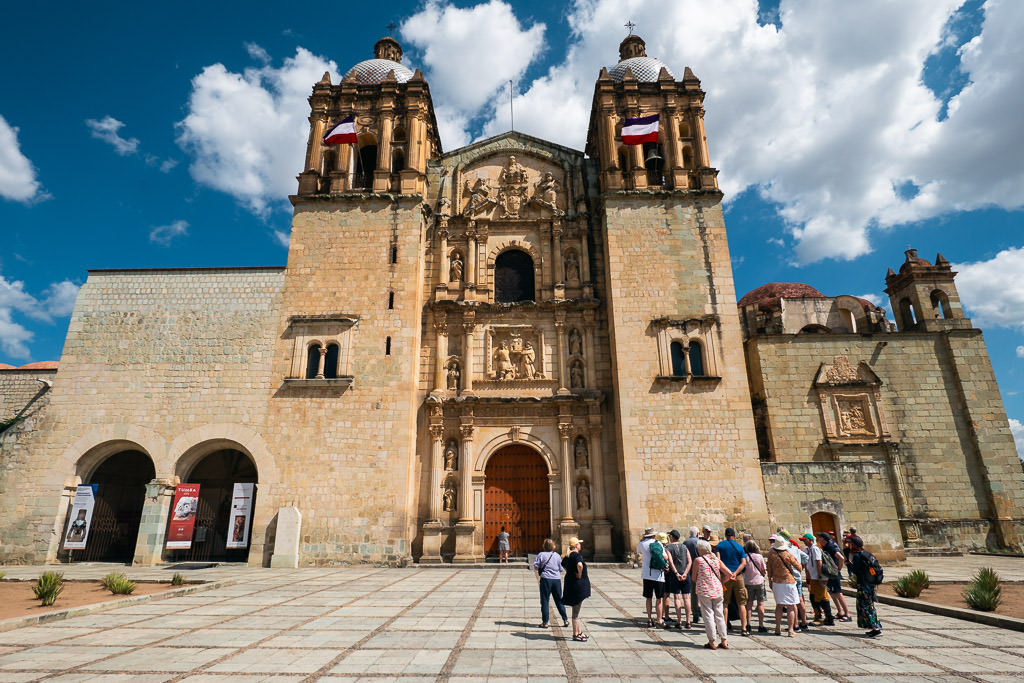
This beautiful baroque church (map pin) took over 150 years to complete, finishing construction in 1724 when it was first used by the Dominican Order.
Be sure to step inside to see its gold leaf ornaments and elaborate altar, which are often said to be among the most impressive in all of Mexico.
The church also has an interesting history, having been used as a base by the Insurgent Army and various Centralist groups during the Mexican War of Independence.
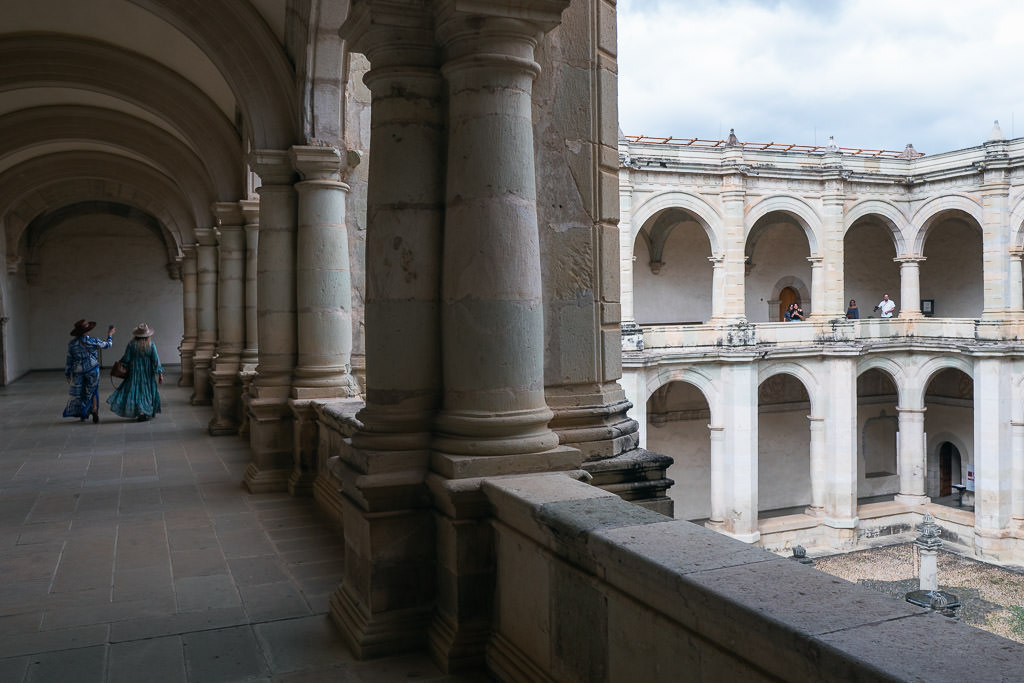
The section that was once the convent nowadays houses the Museum of Cultures, which houses many displays on the pre-Hispanic as well as contemporary cultures of Oaxaca state, including various ancient Zapotec artefacts (many of which were unearthed at Monte Albán).
It’s worth spending an hour or so visiting the museum. The unusually limited opening hours listed on Google Maps are incorrect, by the way; it’s open daily from 10:00 to 17:30, closing 2 hours earlier only on Sundays.
5. Take a tour of the Botanical Gardens
Located right next to the Templo de Santo Domingo, the Jardín Etnobotánico de Oaxaca (map pin) is full of rare plants found all over the state.
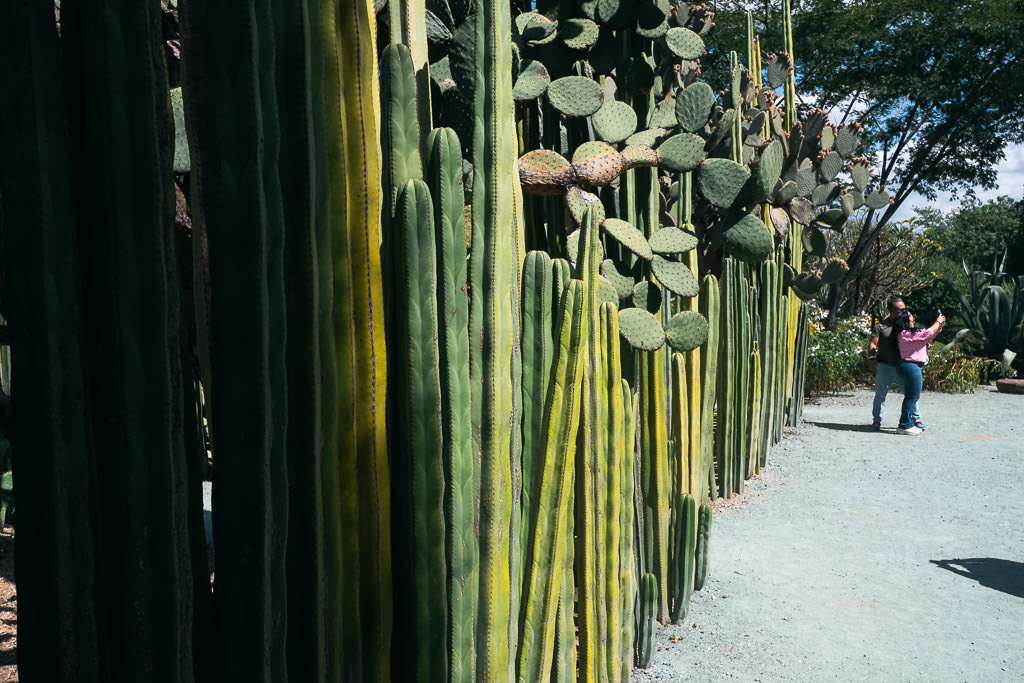
The biggest highlight is the impressive cactus garden, which features some perfect rows of tall tacti standing hedge-like beside the paths, making it a very popular selfie spot!
You can see the Botanical Gardens only on a guided walk, which is very insightful and takes under an hour. You can join a group at the entrance.
6. Take a day trip to Hierve el Agua (BUT go early!)
Hierve el Agua is a petrified ‘waterfall’ of calcium deposits seemingly frozen over the edge of a cliff in the Oaxacan mountains.
I must be honest: I think it’s a tourist trap that can be critically overtouristed at times. Its natural infinity pool became a huge hit on Instagram, which quickly led to overcrowding. I do still list it here but with some reservations.
Admittedly, the natural formation is absolutely beautiful in an objective sense, and you get some great views of the surrounding valley. Hierve el Agua can still be worth it if you tackle it early enough and combine it with some other sights.
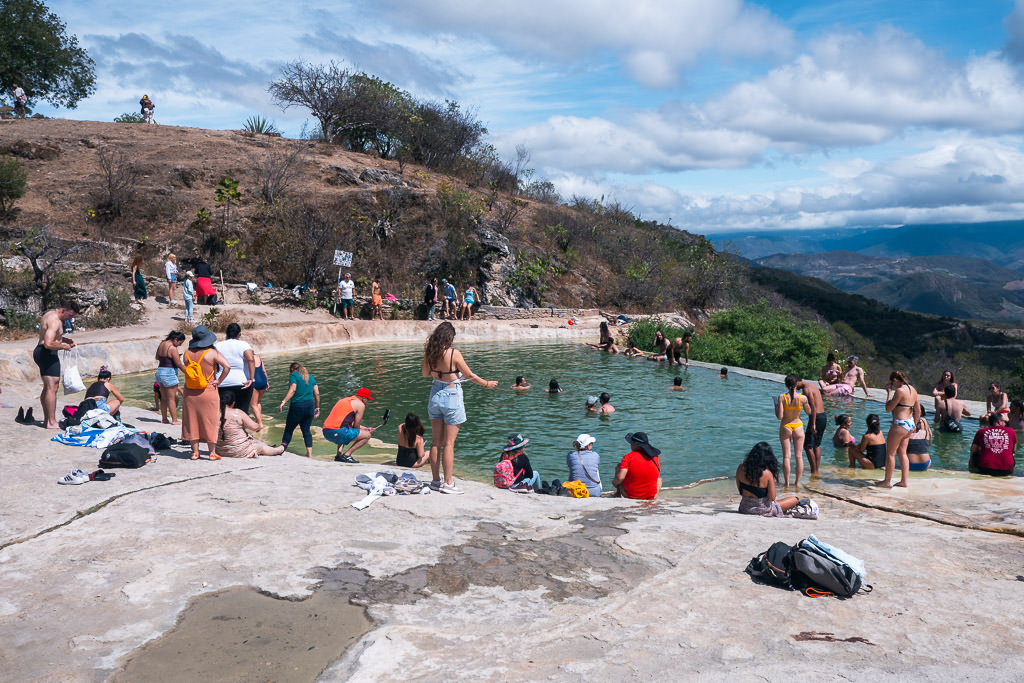
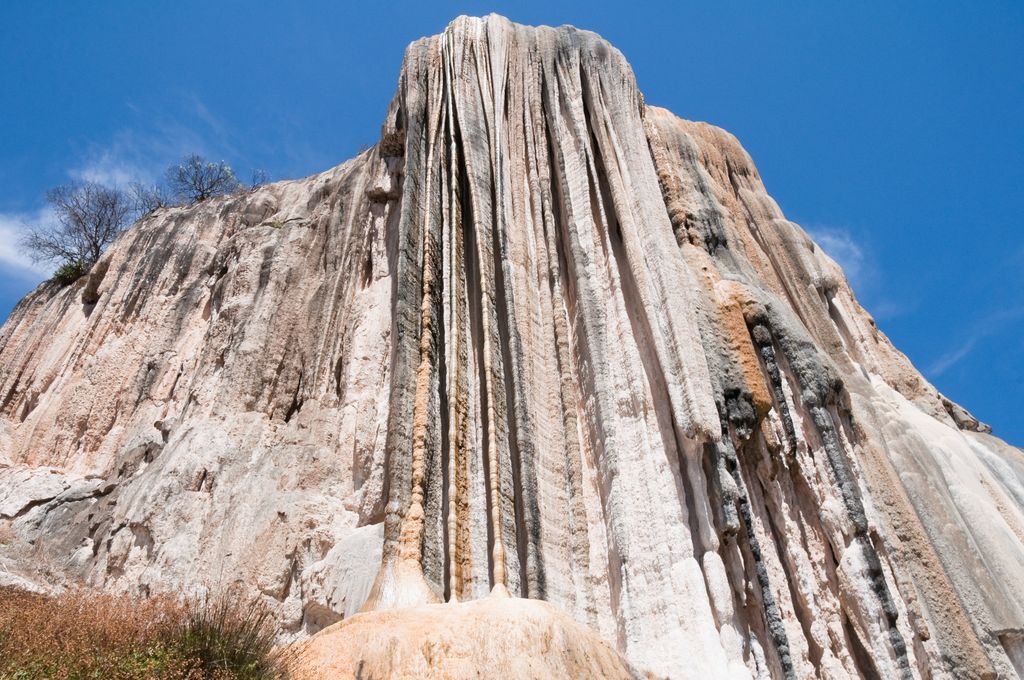
Hierve el Agua takes about 2,5 hours to get to one way. By midday, it gets very crowded with group tours.
That’s why I recommend taking this tour that leaves at 7AM (other tours are at 9 AM or later). I know, it’s not an ideal departure time on your holiday. But as they say, early bird catches the worm.
You’ll definitely beat the crowds and see Hierve el Agua in its true splendor, then see a mezcal factory and indigenous loom workshop along the way back to make the long trip worth it.
7. Wander around the colorful Jalatlaco Barrio
Located just a few blocks east of the main zócalo, the neighborhood of Jalatlaco is bursting with colorful street art, making it feel like a kind of open-air museum.
This is definitely my favorite area to explore in Oaxaca! Start in Calle Aldama (map pin) and then wave your way through the nearby cobblestone streets.
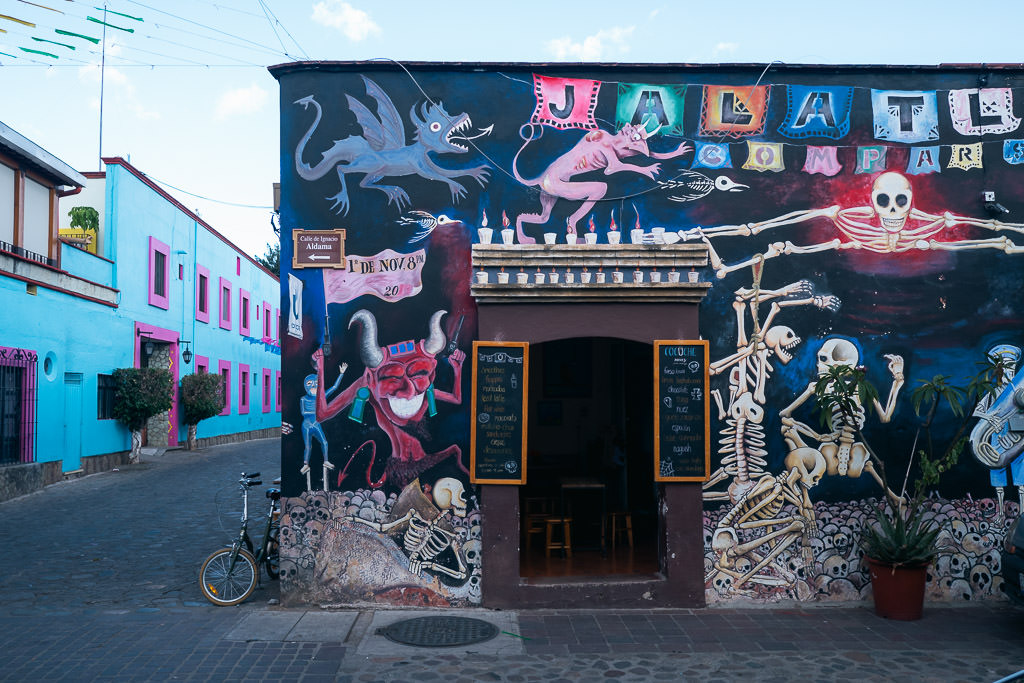
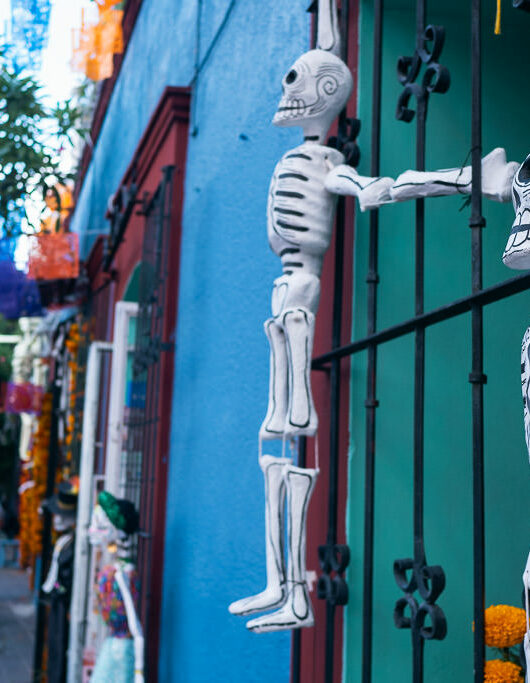
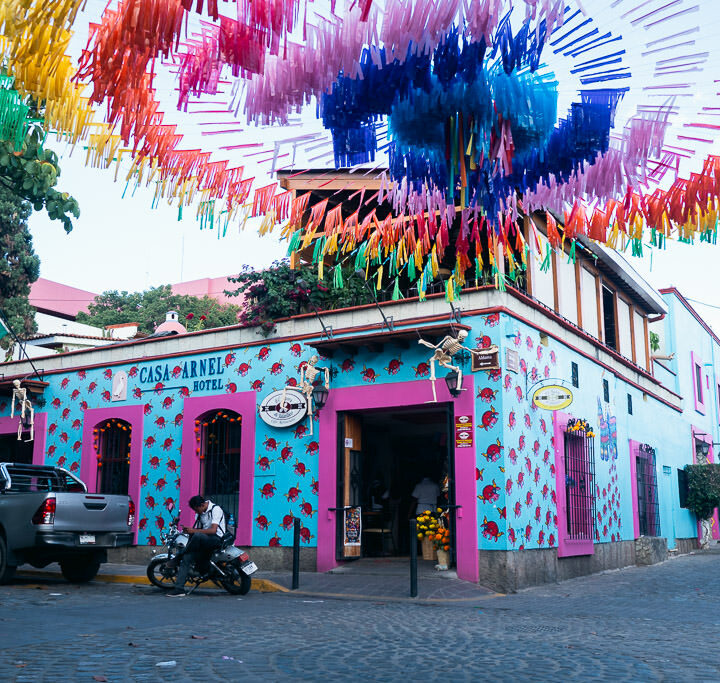
Some of the historical buildings have since been converted into cute cafes where you can enjoy a late breakfast (Mujer de Café is a nice stop as is Jalatlaco cafe), as well as various organic and artisanal shops.
The area is bursting fun funky cafes, boutique shops, and other smaller delights. It’s a riot of color any time of year, but it’s even more vibrant during Day of the Dead, when the residents here make an especially impressive effort with their decorations.
Jalatlaco was once an ancient Zapotec town (before the arrival of the Spanish), so you can find numerous murals dedicated to this past civilization.
8. Visit the Basilica of Our Lady of Solitude
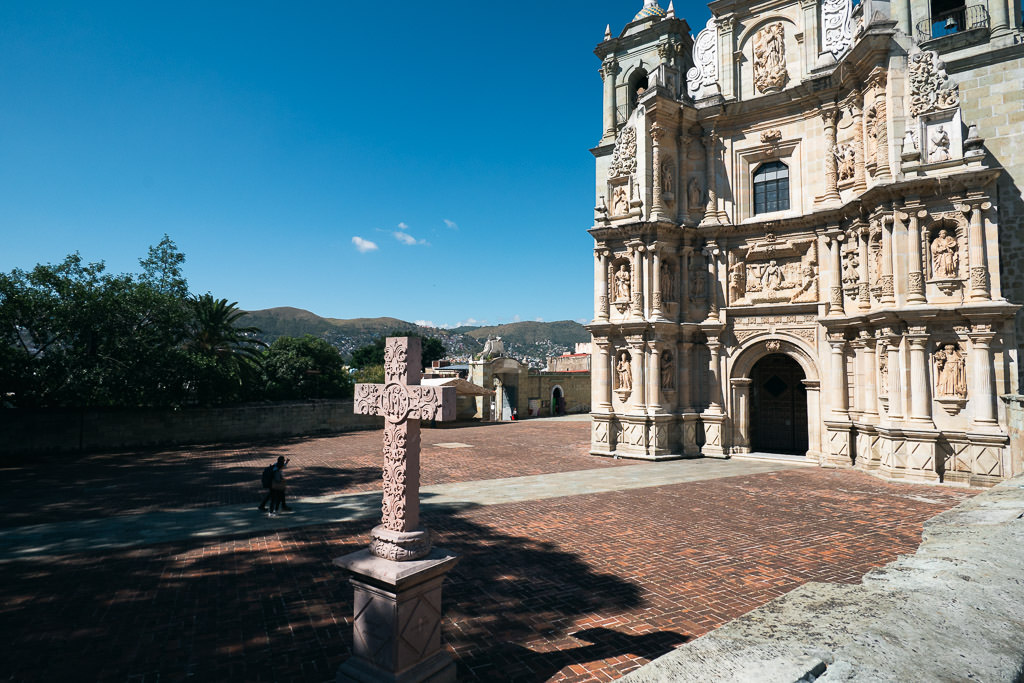
Located a few blocks west of the main square, this 17th-century church (map pin) is another one of Oaxaca’s key landmarks. Dedicated to the patron saint of Oaxaca, it is notable for its intricately carved baroque-style entrance, but also its ornate decor.
Heading here provides an excuse to watch local life unfold on the square outside, as well as to try a local treat.
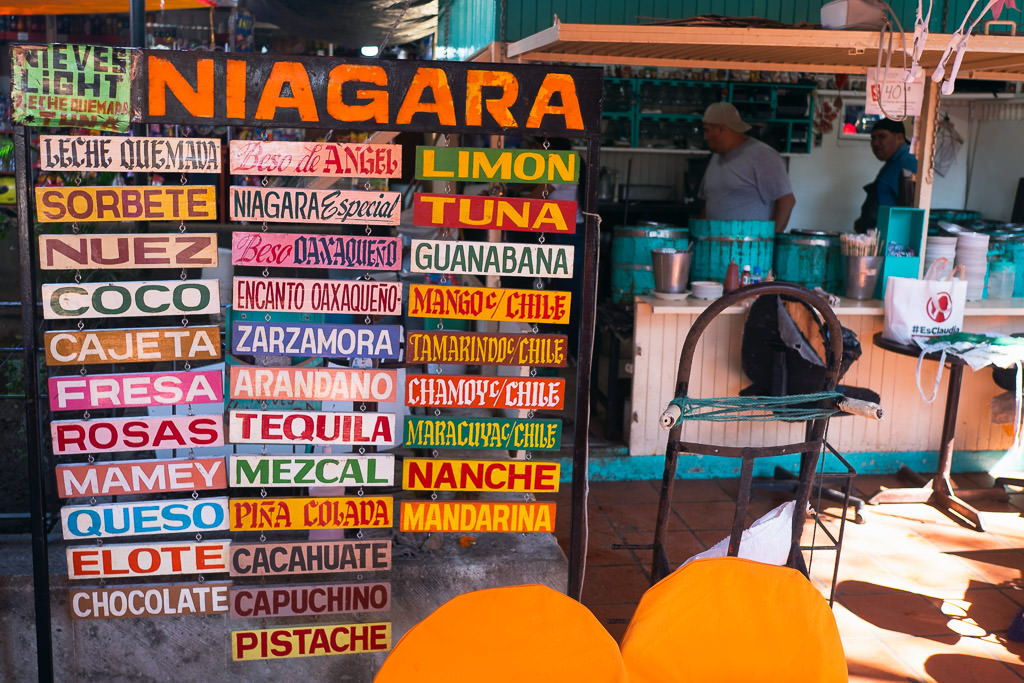
While you are here… try the Nieves!
Stop by the plaza in front of the church where you’ll find a concentrated cluster of stalls selling Nieves, a local type of icecream. The dozens of flavors include many tropical fruits, but also some unexpected ones — like cream cheese, burnt milk, mezcal, and tuna (no, not fish, it’s Spanish for prickly pear!).
9. Try literally all the moles
The iconic dish of Oaxaca is mole, a rich sauce that may be made with over 20 different ingredients, including chili peppers, nuts, seeds, and chocolate.
Mole can be found in many variations throughout the city, each with its own unique flavor profile.
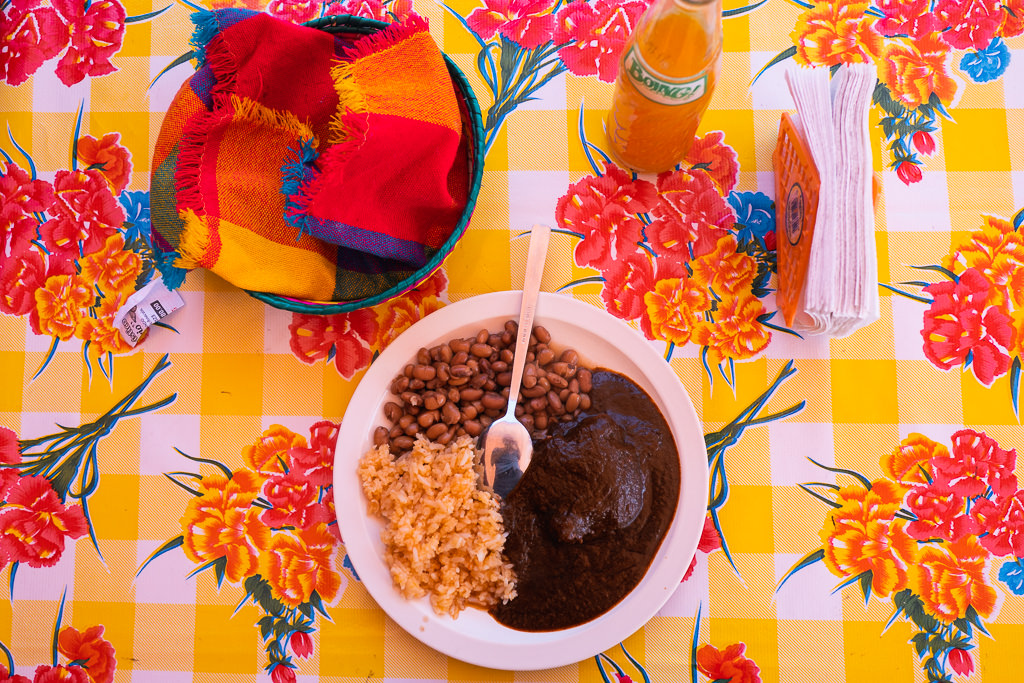
The most common variety is mole negro (black mole), which has a faintly bitter chocolate-like flavor. It is traditionally served over chicken, but can also be enjoyed with pork or beef.
However, at least six other types of mole are popular in Oaxaca, including rojo, coloradito, amarillo, verde, chichilo, and manchamantel.
It’s not difficult to find. If you’re on a budget, go to Mercado 20 de Noviembre, where you’ll find mole on the menu a lot.
If you prefer a restaurant, there are many places you could go, but I much enjoyed having several of my meals at La Casa del Tío Güero, which has good mole with good prices, and has a nice roof terrace as well.
10. Join a traditional cooking class
Another way to get into Oaxaca’s gastronomy is by trying your hand at cooking yourself!
This traditional cooking class is the perfect way to dive deeper into the local culinary culture, where you’ll be taught by an experienced chef how to make your very own Oaxacan dishes.
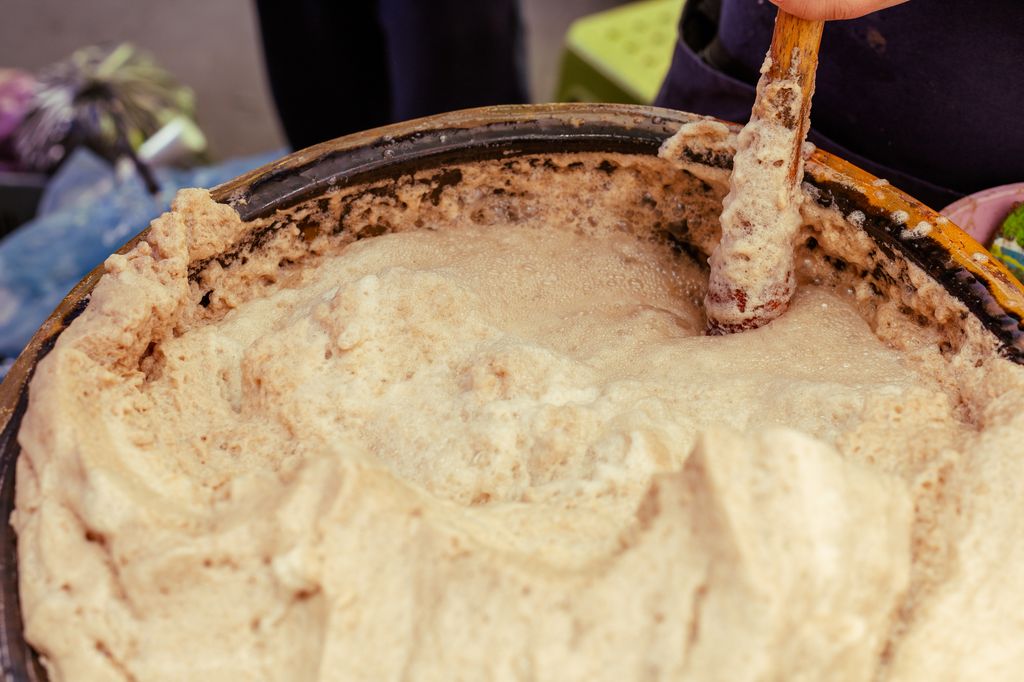
You’ll first head to a local food market to learn about the history of the different ingredients, where you’ll also pick up everything you’ll need for later on.
In the workshop, you’ll then be shown step-by-step how to make various classics, as well as your own tortillas and Oaxacan drinks (such as Tejate and Chilacayota).
11. See the stoutest tree in the world
About 20 minutes west of Oaxaca is the village of Tule, which is home to one of the most remarkable trees. Located on the church grounds in the town center (map pin), it is thought to be the stoutest (i.e. widest) tree in the world, even beating the giant sequoias that dominate the list.

It is thought to be between 1,200 and 3,000 years old, likely having been around during the time of the Aztecs, with local legend saying it was planted by an Aztec priest.
To say it’s an impressively chonky organism is an understatement. It’s also beautiful in a way hard to capture in images. I loved sitting on one of the park benches and contemplating the sheer age and size of this ancient Montezuma cypress. If you’re the kind of person who can look at a tree and drift off into deep thought, you will enjoy it for sure.
The Tree of Tule is included in various day trip tours, but you can also visit independently. If you don’t mind sharing a ride, then grab a red and white colectivo taxi with a sign for Tule, Tlacolula or Mitla (all go in the same direction).
It costs 20 pesos to access the little park around it. A food court and some gardens nearby offer some reason to linger after admiring the tree.
12. Trek to the Pueblos Mancomunicados
In the mountains northeast of Oaxaca, a cluster of indigenous villages decided to band together to allow sustainable ecotourism to take place in their area.
These Pueblos Mancomunicados (‘joint villages’) created a network of hiking trails sprinkled with mountain lodges, pedestrian suspension bridges and even some ziplines, inviting you to explore and enjoy nature.
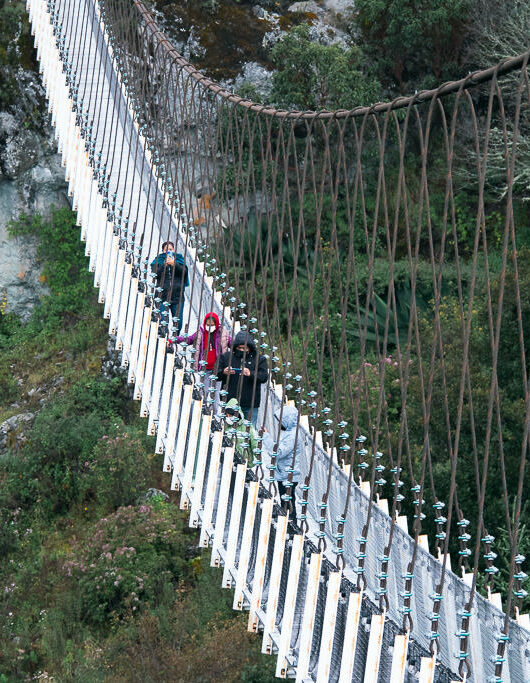
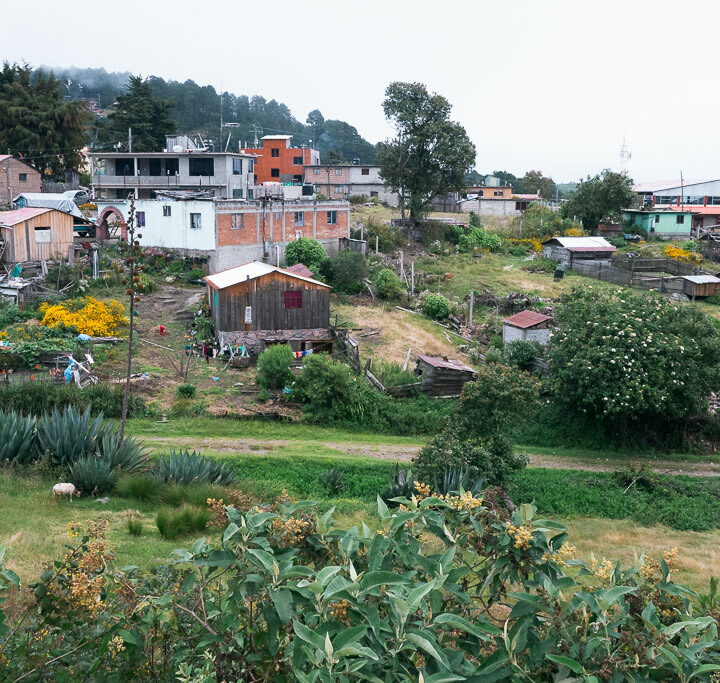
The air is cooler up in the mountains and also a lot fresher than in the city. It’s a hidden gem, away from the typical tourist route, letting you get a true taste of rural Oaxaca.
An official office in Oaxaca City (see location) can provide you with more information as well as multi-day treks with guides that can tell you about the ecology and local customs. Companies like Coyote Adventures and Tierraventura also offer tours ranging from 1 to 6 days.
However, it’s also possible to go independently, at least if you want to go for a shorter route. For instance, you can get a taxi to take you to the village of Benito Juarez and take a day hike to Cuajimoloyas, from where you can get a pickup truck back to the city via Tlacolula. (Although the path is quite obvious, there aren’t always signs, so I highly recommend asking locals about the exact trailhead and using an app like MAPS.me to navigate.)
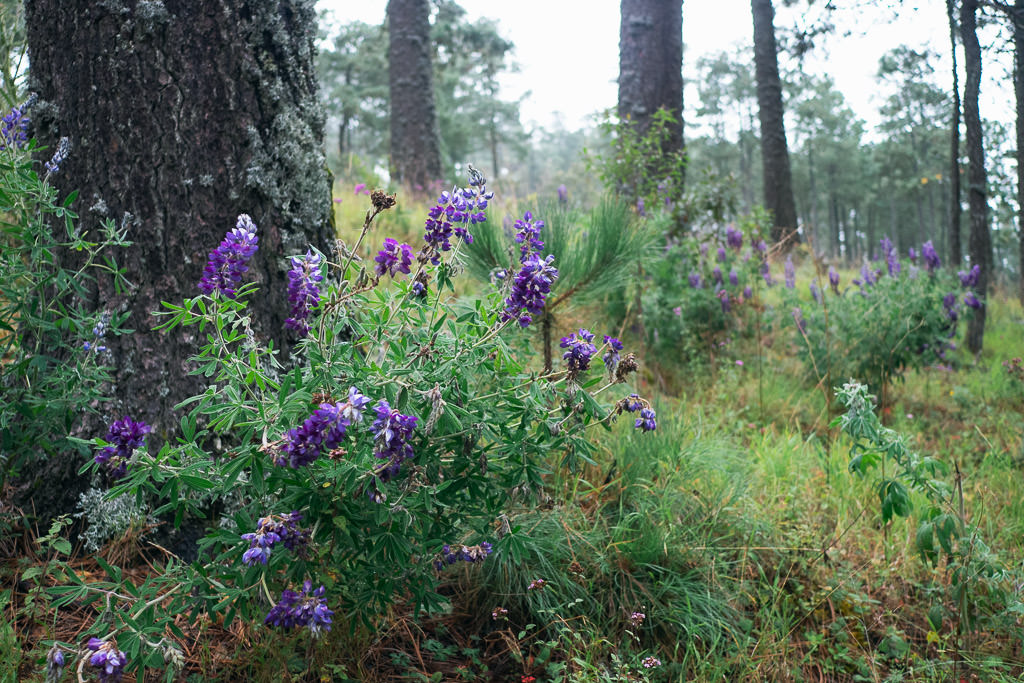
The Sierra Norte is home to beautiful pine-oak forests dotted with giant agave plants and overgrown with countless bromeliads and ferns. I thought these forests would not be as ‘exotic’ to me as the tropical jungles further south in Mexico… at least until I hiked through them and found myself utterly marvelling at the nature around me.
The villages here are very friendly and inviting and I consider the Sierra Norte highly underrated!
13. Stroll the Sunday market at Tlacolula
If you’re in Oaxaca on a Sunday and you love people-watching and seeing some local life, you should definitely go to the nearby town of Tlacolula (map pin).
At this huge street market, people from villages all over the mountains come to sell and buy their groceries and other wares. You’ll see a lot of indigenous people wearing brightly colored clothes, carrying live poultry by their feet, and other typical scenes. There is a large food hall where lots of people enjoy a kind of BBQ.
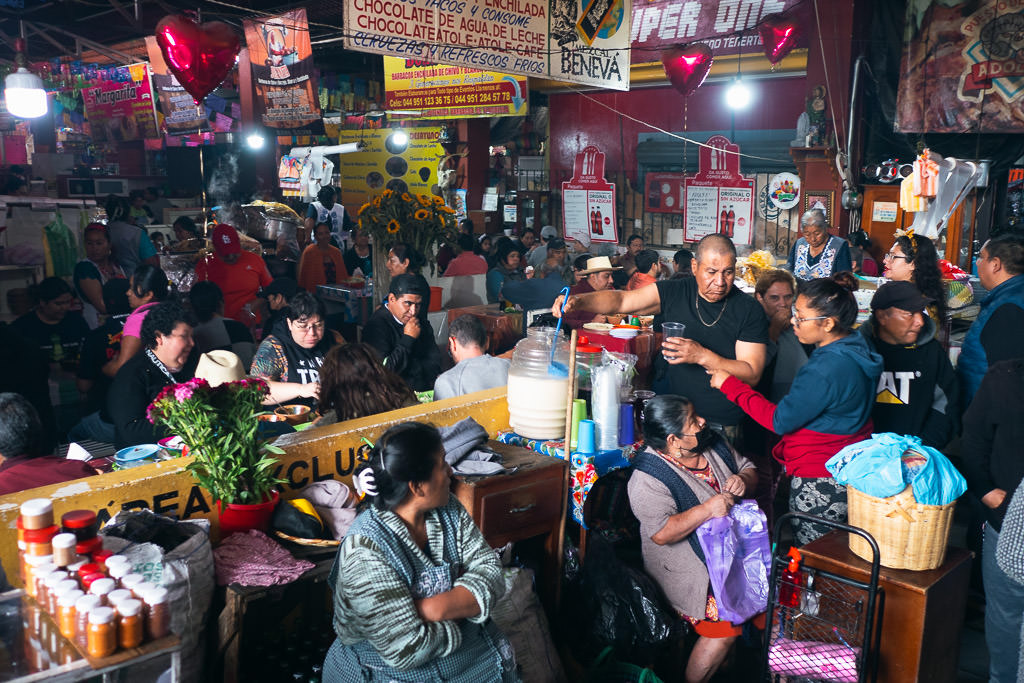
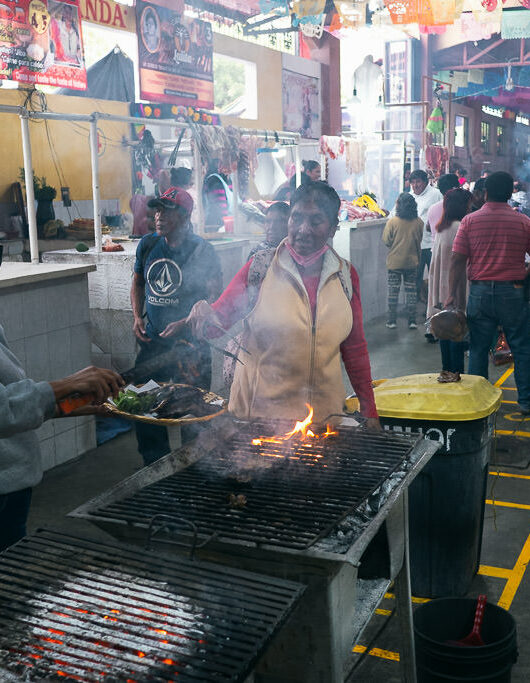
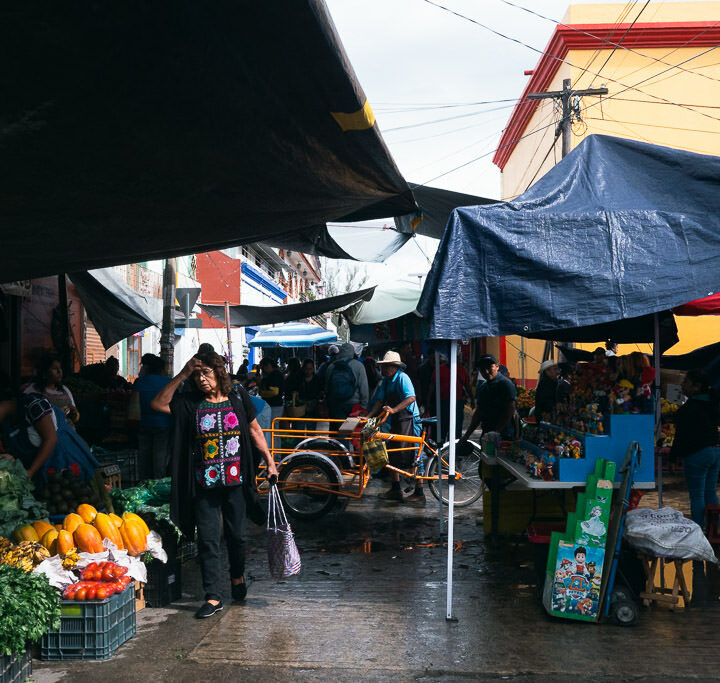
It’s not really a tourist attraction as such but the market is sure to give you sensory overload with its explosion of languages, colors, and aromas. This blog has all the details on how to get there.
If you can’t make it to the Tlacolula market, you might enjoy the Central de Abastos market in Oaxaca, which is a huge fresh food market that you give you an authentic glimpse into day-to-day life.
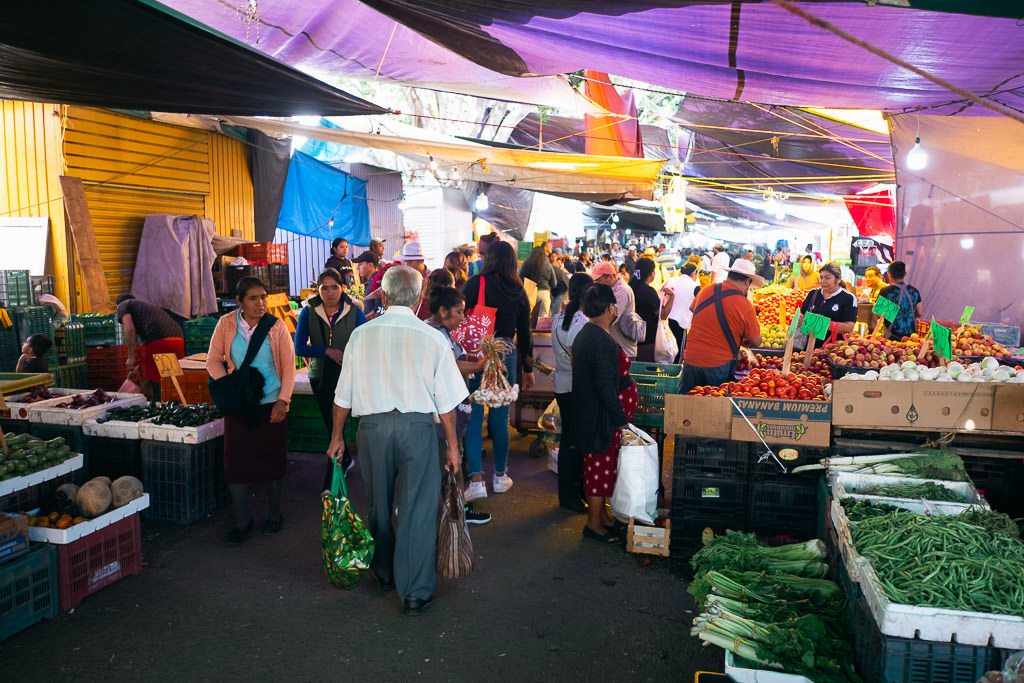
(Always be aware of the possibility of pickpocketing at busy markets and keep your valuables hidden.)
14. Sip on the local spirit at a Mezcalería
While Mezcal is slowly gaining popularity, it remains the lesser-known spirit when compared with its bigger brother Tequila.
The strongest of the two, Mezcal is made from the same agave plant and first originated here in Oaxaca (while popular all over Mexico, over two-thirds of Mezcal is produced in the state).
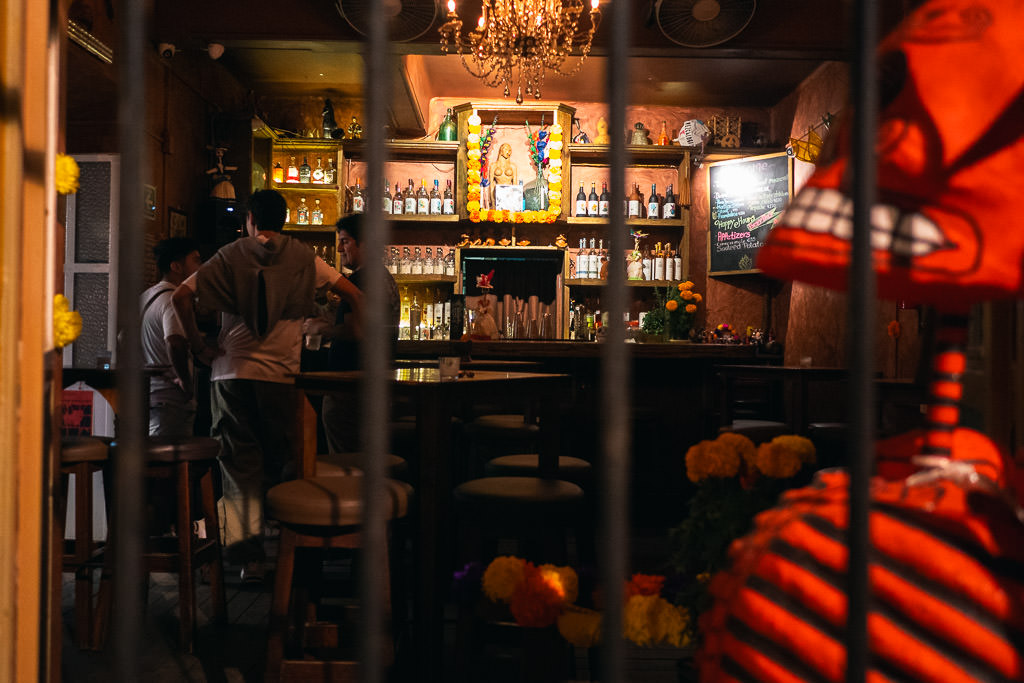
This spirit really is the social glue of the city, and in the local mezcalerías, you’ll find locals sat side-by-side pounding these back – even along with the occasional tourist or two!
I highly recommend visiting one of these bars at least once, where you can not only have a memorable night out but also get to try various styles and authentic Mezcal concoctions.
Even better, you can visit one of the local Mezcal distilleries to try this legendary spirit straight from the source.
15. Discover the art of traditional textile making
If you ever walk past an Oaxacan market or souvenir shop, then there’s a good chance you’ll spot various colorful, embroidered blankets and ponchos hanging from above.
Many of these are handmade with traditional practices using looms. Fabrics are woven using wool from animals such as Alpaca, Sheep, and Vicuña, each with their own particular texture and feel.
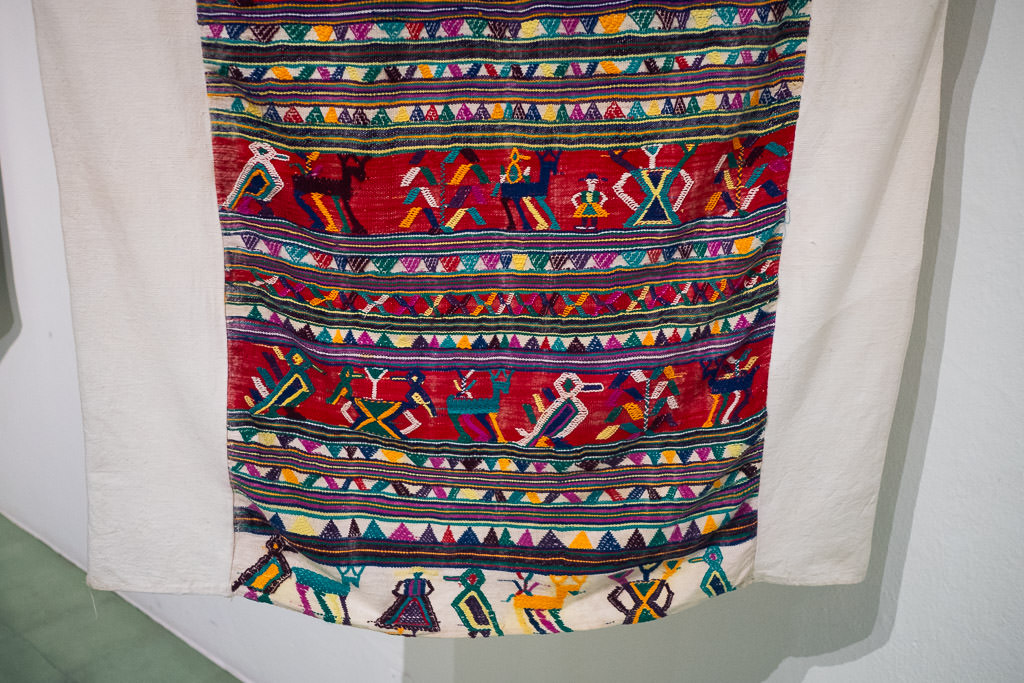
You can get a wonderful impression of the indigenous textile crafts by visiting the Textile Museum of Oaxaca. It’s a small museum, but entry is free, and being located close to the main square it’s easy to pop by. Some beautiful handicrafts are on display.
You can also go straight to the source for traditional Zapotec textiles. The village Teotitlán del Valle, about a 40-minute drive east of Oaxaca, is one of the best locations to go as it’s where many textiles are produced. Details for how to get there can be found here. If you ever wanted to buy a colorful artisanal Oaxacan rug, here is your chance!
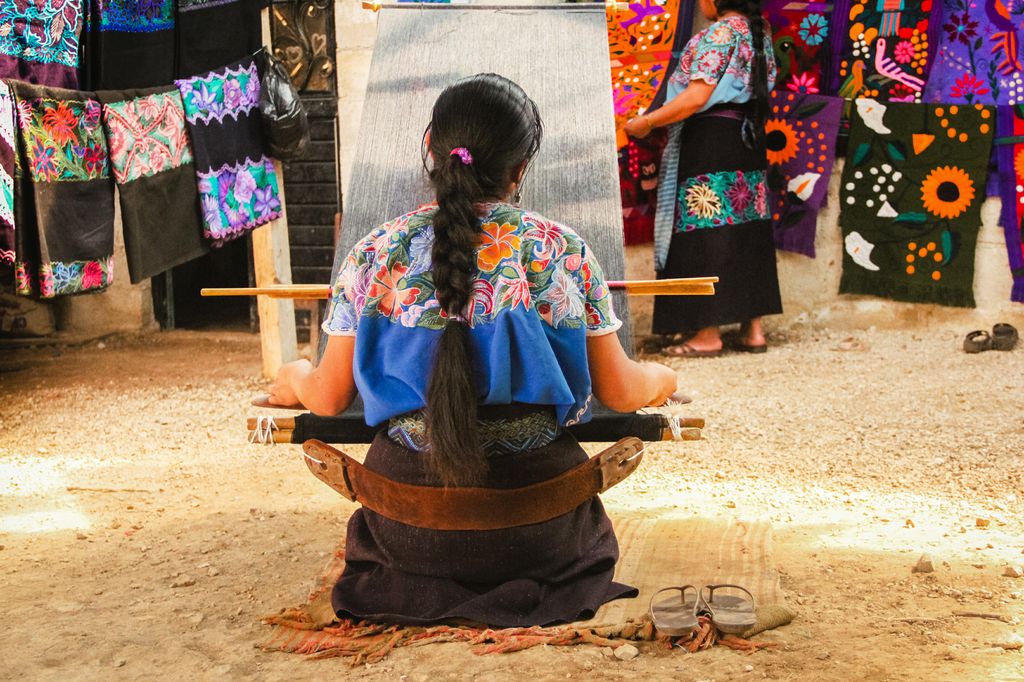
Now you know the best things to do in Oaxaca…
Oaxaca City is truly one of the most interesting cities to visit in Mexico if you’re looking for culture and cuisine.
For more tips on how to spend your time in Oaxaca, don’t miss our Oaxaca travel guide with 1, 3, and 6-day itineraries, where to stay, and how to get to Oaxaca.
Some links may be affiliate links, meaning I may earn commission from products or services I recommend. For more, see site policies.






0 comments
Leave a comment
Your email address will not be published. Comments are manually moderated.